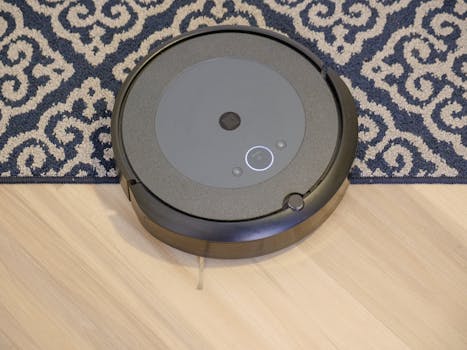
Smart Homes and Smart Living: The Technological Transformation of European Homes by 2025
Smart Homes and Smart Living are revolutionizing the way we live in European homes. With the rapid advancement of technology, homes are becoming increasingly automated, connected, and sustainable. By 2025, European homes are expected to undergo a significant transformation, with the integration of innovative technologies such as the Internet of Things (IoT), artificial intelligence (AI), and energy-efficient systems.
Introduction to Smart Homes and Smart Living
Smart homes and smart living refer to the integration of technology and automation in homes to make them more comfortable, convenient, and sustainable. This includes the use of smart devices, sensors, and systems that can be controlled remotely or automatically, to manage various aspects of home life, such as lighting, temperature, security, and entertainment.
The concept of smart homes and smart living has been around for several decades, but it has gained significant momentum in recent years, with the development of new technologies and the increasing demand for sustainable and energy-efficient living solutions.
Trends and Advancements in Smart Homes and Smart Living
Several trends and advancements are driving the transformation of European homes by 2025. Some of the key trends include:
- Home Automation: The use of smart devices and systems to automate various aspects of home life, such as lighting, temperature, and security.
- IoT: The integration of IoT devices and sensors to collect and analyze data, and make informed decisions about home management.
- Artificial Intelligence (AI): The use of AI algorithms and machine learning to analyze data, predict patterns, and make automated decisions about home management.
- Energy-Efficient Systems: The integration of energy-efficient systems, such as solar panels, wind turbines, and energy-efficient appliances, to reduce energy consumption and carbon emissions.
- Sustainable Materials: The use of sustainable materials, such as recycled materials, bamboo, and low-VOC paints, to reduce waste and minimize environmental impact.
Benefits of Smart Homes and Smart Living
The transformation of European homes by 2025 is expected to bring numerous benefits, including:
- Increased Comfort and Convenience: Smart homes and smart living solutions can learn occupants’ preferences and adjust settings to create a comfortable and convenient living environment.
- Improved Energy Efficiency: Smart homes and smart living solutions can optimize energy consumption, reduce waste, and minimize carbon emissions.
- Enhanced Security: Smart homes and smart living solutions can integrate advanced security systems, such as biometric authentication, motion detection, and video surveillance, to provide enhanced security and peace of mind.
- Increased Property Value: Smart homes and smart living solutions can increase property value, as they provide a unique selling point and a competitive advantage in the real estate market.
Challenges and Limitations of Smart Homes and Smart Living
While the transformation of European homes by 2025 is expected to bring numerous benefits, there are also several challenges and limitations to consider, including:
- Cybersecurity Risks: Smart homes and smart living solutions can be vulnerable to cybersecurity risks, such as hacking and data breaches.
- Interoperability Issues: Smart homes and smart living solutions can experience interoperability issues, as different devices and systems may not be compatible with each other.
- High Upfront Costs: Smart homes and smart living solutions can require high upfront costs, which can be a barrier to adoption for some homeowners.
- Lack of Standardization: Smart homes and smart living solutions can lack standardization, which can make it difficult to integrate different devices and systems.
Conclusion
In conclusion, the transformation of European homes by 2025 is expected to be significant, with the integration of innovative technologies such as home automation, IoT, AI, and energy-efficient systems. While there are several challenges and limitations to consider, the benefits of smart homes and smart living are numerous, and can provide a more comfortable, convenient, and sustainable living environment for homeowners.

